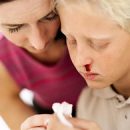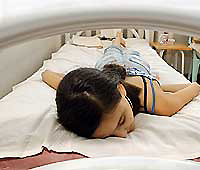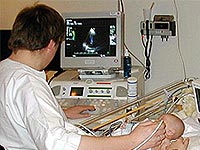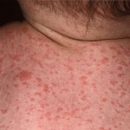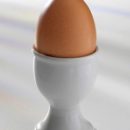Nobody is insured against injuries, it can happen with everyone, but how the mother is experiencing when the feet happens to the child, you can only imagine. Excitement and chagrins of parents, if there is a fracture of the hip in a child, are not completely groundless, because it is a hard pathology. Article about it.
Content
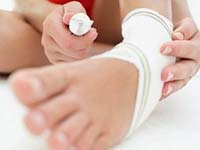 The famous winged phrase, once sounded in a famous film: «...woke up — gypsum», It is quite applicable to a conversation about the fracture of the feet of the child.
The famous winged phrase, once sounded in a famous film: «...woke up — gypsum», It is quite applicable to a conversation about the fracture of the feet of the child.
The fracture should be viewed as a violation or damage to the integrity of the bone arising for various reasons. Distinguish acquired and congenital fractures, and the latter are quite rare and arise either during injury during pregnancy of the future mother, or it may be associated with the disease of the fetal skeleton. Extremely numerous group of fractures — These are damage acquired as a result of the effect of mechanical strength or during a traffic accident. Any traumatic exposure to the bone in the human body, as well as a fibrous bone in a child, is accompanied by varying degrees of damage to soft tissues.
Classification and clinic fractures
Depending on the direction of the fracture line, transverse, oblique, longitudinal and screw-like damage distinguish. Injuries are simple or complex depending on how many parts happened to the fracture, with a bone from the bone of one or more fragments, in such cases the terminology is used: a consolidated, multi-skid or fragmented. It is possible for the so-called incomplete fracture when only a crack is formed in the bone, in contrast to the full, in which the bone fragments are almost always observed.
How to suspect a fracture in a child? What should make mom think about a fracture when she sees that the child is excited and crying? This indicates a number of signs.
The fracture of the bertovoy bone in a child, like any tubular bone, is characterized by its pathological mobility, cutting and acute pain at the moment of fracture, disruption of the shape of the leg, and the permanent pain in the place of injury, loss of the reference function, edema and subcutaneous hemorrhage. In a child, such a type of fracture may occur with the unsuccessful jump from the Swedish wall, when falling from the stairs and in any household situation. The integrity of the skin may not be disturbed, and bone frails may not be displaced, such fractures grow quickly, using a short gypsum bandage.
Symptoms of a fear of the thigh in a child
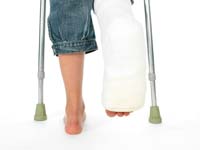 Specialists Traumatologists and orthopedists deal with acquired and congenital pathology of femur in children. An innate option is quite rare, in contrast to the acquired or traumatic, resulting in a road accident or domestic damage. Traumatic hip fracture usually affects soft fabric and can be open or closed. In children, the full and incomplete fracture of the femur is found not often — In total, 4% of cases of all damage and most situations are without dismissal of fragments.
Specialists Traumatologists and orthopedists deal with acquired and congenital pathology of femur in children. An innate option is quite rare, in contrast to the acquired or traumatic, resulting in a road accident or domestic damage. Traumatic hip fracture usually affects soft fabric and can be open or closed. In children, the full and incomplete fracture of the femur is found not often — In total, 4% of cases of all damage and most situations are without dismissal of fragments.
How to understand and see what happened, what are the symptoms of the fracture? There is a strong pain and swelling of the lower limb, a violation of mobility in the field of femur, the forced position of the leg, is possible to deformation of the femoral bone. With an open fracture, the wound and bleeding is noticeable.
Treatment of the fracture of the femoral bone involves the premises of the child to the hospital and consists of three stages:
- fracturing;
- Holding the femur in the required position until complete restoration;
- Rehabilitation of the limb function.
The principles of the therapy of the fracture of the femoral bone in the kids to 3 years and children of the older age category are characterized by approaches using vertical stretching on the mace in kids, and the classic skeletal stretch with the help of the spokes in children's older children.
Operational intervention is required with the unsuccessful use of conservative treatment, in case of incorrectly contrived or open fractures. The main factors of the rehabilitation of the child are to create conditions for disability prevention: physiotherapy procedures, massages, liquidation and elimination of pain and edema.
How to behave parents at such a moment and how to help the child? First of all, the entire period of treatment and recovery should take place in close contact with the doctor, with the understanding that a full-fledged care and balanced nutrition becomes an important factor in the case of long-term treatment, as well as attentive attitude towards a child.


